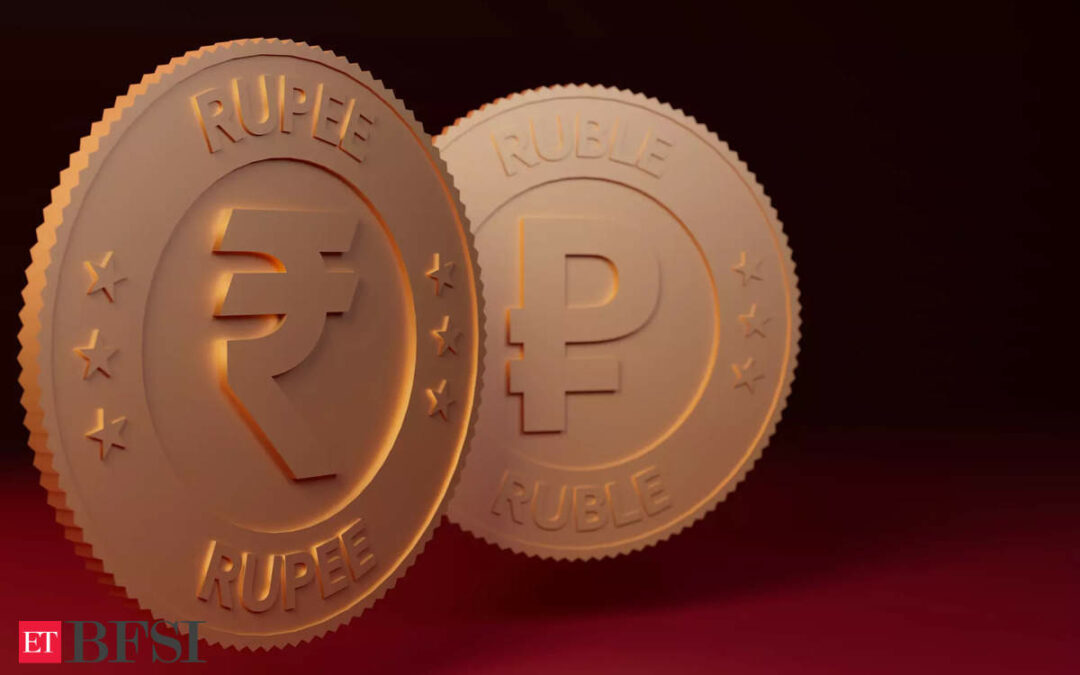India and Russia are exploring the idea of a dynamic reference rate to start a rupee-rouble market, along with allowing greater deployment of the rupee balance that has accumulated in course of trade between the two countries since outbreak of the Ukraine war.
A reference or exchange rate is aimed at overcoming the dollar trade barriers raised by US sanctions imposed on Russia in February 2022.
These, along with putting in place a payment confirmation mechanism, are expected to figure during a meeting of senior central bank officials and bankers in Moscow this week, two industry persons told ET. The Reserve Bank of India (RBI) recently took feedback from banks and financial institutions dealing with Russian funds registered in India.
Some Russian financial institutions earlier sounded out RBI on a mechanism to let them use rupees lying in special accounts in India for investment in stocks and securities here. There is accumulated rupee balance lying in special, or vostro, accounts that Russian banks have with Indian banks.
This is due to rupee payments for Russian imports exceeding India’s exports to that country.
RBI deputy governor T Rabi Sankar and top officials of some stateowned banks are part of the team visiting Moscow for a meeting of the India-Russia joint business council for banking and finance. Currently, banks handling export-import payments or any capital flows between the two countries have to take the dollar route in converting the currencies. This means carrying out two, almost simultaneous, transactions — of rupee to US dollar, and dollars to rouble — in arriving at a rupee-rouble exchange rate. However, with several Russian banks barred from using SWIFT — the international messaging system that is widely used to confirm cross-border payments — the scope of conventional currency transactions with dollar legs has significantly come down.
“Under the circumstances, an INR-rouble reference exchange rate, which can be set by Reserve Bank of India and Bank of Russia, and revised to keep in sync with the underlying market realities, could be used. However, for a reference rate to be a transaction rate, we need an arrangement where the two central banks open windows to occasionally step in,” said a senior banker.
A possible mechanism could be like the one between India and UAE for settlement of trades in non-dollar currencies. Under this, exporters and importers from both countries can invoice trades and make payments in rupee or dirham to settle trades, while the central banks agree to accept the foreign currency for the domestic one. In such an arrangement, the presence of the central banks, playing the role of some kind of a market maker who would accept the foreign currency, would lend a degree of comfort.
“In their feedback to RBI, some of the banks have left it to the regulator to decide on a suitable system, with adequate security safeguards that could be an alternative to SWIFT,” said another person











